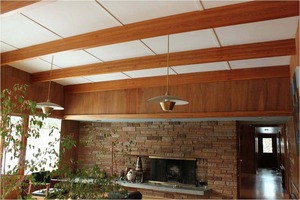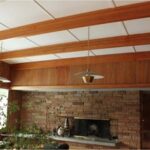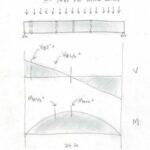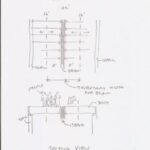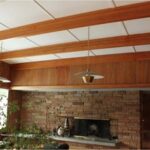In most cases, beams for floors, roofs, etc. are designed `just big enough’ to accommodate anticipated loads. Often such design is performed without consideration of in-place modifications to the beams, such as the drilling of holes for electrical service. In general, the drilling of a hole in a beam reduces the beam’s carrying capacity. If the beam was indeed designed `right up to the wire’, without consideration of a future hole, the drilling of such a hole is `not good’ (from a safety standpoint). If the beam is already in place, it should be investigated for any excess capacity, to accommodate the loss associated with the hole. If the beam has enough excess capacity at the hole, GREAT; if not, a structural repair may be necessary, or the beam replaced.
If the beam is not in place, then the drilling of the hole must be approved by the Engineer of Record, who may determine that there is sufficient excess capacity in the originally proposed beam, or, if not, require a larger beam.
The following example illustrates a `quick’ and CONSERVATIVE approach to determining alternate beam sizes in the absence of (or while waiting for) formal approval of, or re-specification of, the original beam, by the Engineer of Record.
Consider a 5-1/8 in. (wide) X 18 in. (deep) Douglas fir (24F-1.8E) glulam beam that spans 16 feet (ft) and supports a floor. Framing suggests that the loading is `uniform’. The Electrical Contractor wants to drill a single 5/8 in. diameter vertical hole for a light fixture (`anywhere’ … but probably at mid-span). In the absence of more information, the American Institute of Timber Construction (AITC) Table DF-27 will be used to provide: 1) an alternate width beam using the same depth, and 2) an alternate depth beam using the same width. AITC Technical Note 19 will be used as a basis for evaluation of the effect of the hole in reducing the beam’s carrying capacity.
First, let’s check the overall hole size. AITC Technical Note 19 requires that any vertical hole be no closer than 3 hole diameters to the side of the beam, as measured from the hole center. This means if the hole is centered, which we will presume it is, the bare-bones maximum hole size is the beam width divided by 6 (3 diameters each direction). So, for the example at hand, the maximum size hole, regardless of any further capacity considerations, is 5-1/8 divided by 6 or 0.85 in. Since the hole in question is 5/8 in. in diameter, it satisfies the `does it even fit?’ criterion.
Now let’s look at the question of beam capacity. AITC Tech Note 19 says that a vertical hole effectively reduces width of a beam by an amount of 1.5 times the hole diameter. Thus, a 5/8 in. hole effectively reduces the width by 1.5 x 5/8 in. = 0.9375 in. Since carrying capacity (in bending) is directly related to width (basic engineering mechanics, and AITC Tech Note 19, Equation 8), this results in a 0.9375 in. / 5.125 in. or 18% loss in capacity. In terms of alternate beam sizes, alternate sizes must be sought that make up for this 18% loss (in the originally specified beam).
AITC Table DF-27 indicates that the load capacity of an undrilled 5-1/8 x 18 beam is 1707 pounds per linear foot (plf). Allowing for the possibility that the originally planned beam was designed `right up to’ capacity, alternate beam sizes will be sought that carry 1707 plus 18% of 1707 plf, or 2019 plf. Table DF-27 indicates that the 6-3/4 x 18 will carry 2187 plf (more than enough), and the 5-1/8 x 21 will carry 2288 plf (also more than enough). Thus, without more refined calculations, alternate beam sizes of 5-1/8 x 21 and 6-3/4 x 18 will be sufficient.
Note that there are some differences in beam self-weight that come into the picture. We could `split hairs’ with regard to our calculations and bring in the small differences in beam weights; however, it appears that the alternate sizes will be more than adequate. Plus, we have not allowed for any excess capacity in the originally proposed beam (to begin with). Thus, the alternate sizes provide a conservative starting place for alternate beam sizes. Preliminary determination of alternate sizes may prove valuable in determining change-order costs, availability of alternatives, and scheduling, while awaiting (or in absence of) verification by the Engineer of Record.
References
Guidelines for Evaluation of Holes and Notches in Structural Glued Laminated Timber, Technical Note 19, American Institute of Timber Construction, Centennial, CO, July 2012.
Beam Capacity Table, Floor Beams, Floor Live Load, Douglas Fir – Larch, Table DF-27, American Institute of Timber Construction, Centennial, CO.
